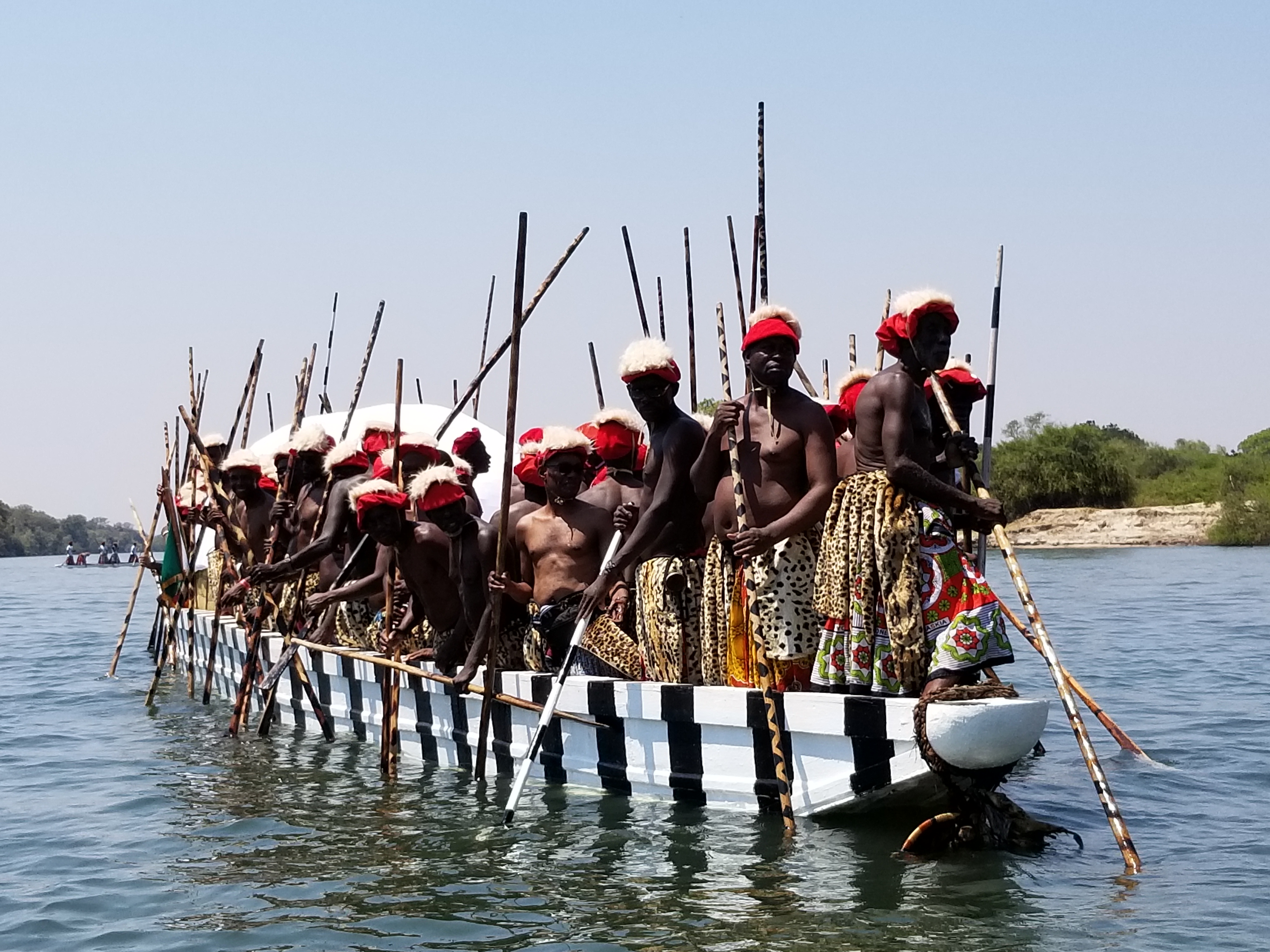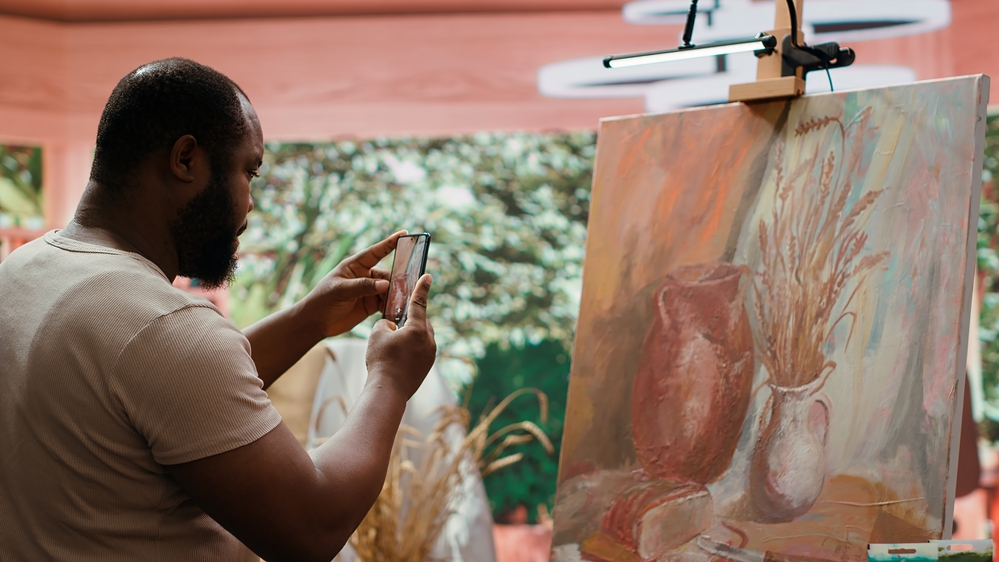The royal paddlers of the Nalikwanda, the Litunga’s royal boat, will be updating an old tradition by adorning themselves in their newly acquired Heritage Furs, fabric replica leopard and serval cat skins. High quality garments with a genuine appearance, these new skins are intended to save leopards, serval and other cats by reducing demand for real skins from dead animals.
The Kuomboka traditional ceremony, which usually takes place in late March or early April, marks the ceremonial journey of the Litunga (the Lozi King) from his flooded palace at Lealui, near Mongu, to his dry palace on higher ground at Limulunga and is the biggest and best known traditional ceremonies in the country. During the ceremony, every paddler is required to wear leopard and other wild cat skins. According to a senior paddler, Maswabi Maswbi, “The Litunga embodies an immense power that must be protected by formidable animals like leopards, cheetahs and lions. Paddlers wear these animals’ skins to show that they have their hunting prowess and strength to protect the Litunga from any attackers.”

In Zambia, a permit is required to own a leopard skin, but with numbers of the felines rapidly dwindling due to poaching and habitat loss, it has become increasingly difficult for the Department of National Parks and Wildlife to issue permits. In Zambia, we only have small populations of lions, leopards and cheetahs remaining inside national parks and other protected areas, which may disappear altogether if they continue to be used in the same way. Their future existence is also important for economic opportunities presented through the safari tourism and other industries.

This is a challenge that the Barotse Royal Establishment (BRE) knows too well, as efforts to secure leopard skins for over 170 paddlers have become increasingly difficult in recent years. Another challenge the BRE grapples with is effective preservation of the skins so that they can be reused for longer periods as real skins are susceptible to damage when they come in contact with water. The fact that a large portion of the Kuomboka ceremony happens on water during the rainy season, simply makes things worse for the BRE.

Fortunately, a possible solution to these challenges was developed and piloted back in 2013 when global wild cat conservation organization, Panthera, launched the Furs for Life programme in Southern Africa. The aim of Furs for Life is to reduce demand for leopard skins among the Shembe Church, a religious group that brings together elements of Christianity and traditional Zulu beliefs and has millions of followers across Southern Africa.
Tristan Dickerson, who started Panthera’s Furs for Life programme in South Africa and now consults on the new Saving Spots project in Zambia, recounts: “Representing a conservation-oriented community, the Senior Chief [Inyambo Yeta] approached Panthera to work together to devise a solution that would replace real cat furs used during the Kuomboka festival and prevent the loss of any more wild cats targeted for their skins in the future.”With support from Peace Parks Foundation and Cartier and 18 months of negotiating, planning, designing and redesigning, Panthera was ready to hand over to the Litunga an initial 200 synthetic leopard and serval fur skirts known as lipatelo and 200 synthetic lion main mishukwe – headpieces that adorn the paddlers’ striking red berets.
On 8 August 2019 at the Kuta, the Litunga’s Royal Court at Limulunga Palace, more than 400 people from nearby communities, indunas (chiefs) and traditional leaders from across the province and some local government officials came to witness the handover ceremony, which included traditional dances and music from the Litunga’s musicians. The Ngambela (Prime Minister) of Western Province, Mr. Mukela Manyando spoke on behalf of the Litunga: “His Majesty extends great thanks to you our guests who have brought apparels that will be of much use in our ceremony. His Majesty also thanks you for accepting the request that came from his Royal Highness the Senior Chief to help protect wildlife in this region.”
Panthera presented over 200 Heritage Furs to the Barotse Royal Establishment and are expected to hand over an additional 400 in the coming months. To ensure paddlers do not engage in illegal hunting of leopards and serval, the BRE will only allow paddlers wearing the Heritage Furs on royal vessels during the Kuomboka and other ceremonies. Following the official launch of the project in Mongu, the Heritage Furs were used for the first time in public during a Kupuwana Ceremony held on the Zambezi River, near Livingstone in September as part of the fifth Zambezi International Regatta and Southern EXPO. The Kapuwana Ceremony, which roughly translated means “to play around in the water” involved approximately 70 Lozi paddling His Majesty the Litunga on a Royal Barge called the Indila. This auspicious occasion was the first time a Lozi King had made an official visit to Livingstone since 1947 and was witnessed by a sizeable and highly enthusiastic crowd. Gareth Whittington-Jones, who manages the Saving Spots Project, expressed Panthera’s appreciation of the Lozis’ willingness to embrace the replica skins in order to save wild cats and allow populations to recover, “The BRE are conservation pioneers that want to protect their natural heritage as well as their rich cultural traditions. Together with our partners at Peace Parks Foundation and Cartier we feel privileged to be in a position to assist with that.”
The Kuomboka is however not the only cultural ceremony in Zambia that uses leopard and other cat skins. In many other cultures, leopards, lions, cheetahs and other cats are revered for their stealth and lethality, which unfortunately results in illegal hunting of many big and small cat species for their skins. The collaboration between the Barotse Royal Establishment and Panthera proves that when culture, tradition and conservation work hand in hand, it is possible to preserve wildlife and tradition at the same time. Look out for updates on this pioneering project at Kuomboka 2020, Western Province.
Visit panthera.org/savingspots to learn more.








